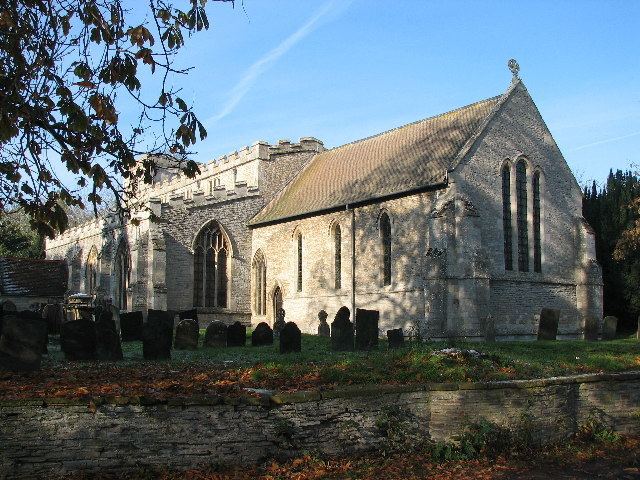Local time Monday 5:03 AM | ||
 | ||
Weather 4°C, Wind E at 11 km/h, 93% Humidity | ||
Stedman doubles from orston in nottinghamshire
Orston is a village and civil parish in the Rushcliffe borough of Nottinghamshire, England, adjacent to Scarrington, Thoroton, Flawborough, Bottesford and Elton on the Hill, and 15 miles (24 km) east of Nottingham. It had a population of 454 at the time of the 2011 census.
Contents
- Stedman doubles from orston in nottinghamshire
- Map of Orston Nottingham UK
- History
- Gypsum brickworks and spa
- Amenities
- Famous people
- References
Map of Orston, Nottingham, UK
History
The place-name Orston seems to contain an Old English personal name, Osica, with -ingtūn (Old English), a settlement called after, or connected with..., so probably, "farm/settlement connected with Osica". Some early spellings are Oschintone in 1086 (the Domesday Book); Orskinton, 1242; Orston, 1284 and Horston in 1428. It lay in Bingham Wapentake (hundred) until such units were abolished under the Local Government Act 1894.
The population of Orston was 351 in 1801, 391 in 1821, and 439 in 1831. More detail on the history of the village and the sources for it appears on the village website. There is a short description of the village in 1870–72 in John Marius Wilson's Imperial Gazetteer of England and Wales.
Orston farming showed an unusual variant of the open-field system, with four fields instead of three. An enclosure act was passed in 1793. A detailed survey of Orston's present appearance and recent history as a conservation area was made in 2010.
Gypsum, brickworks and spa
There are still gypsum quarries in the area. Indeed, Orston was once primarily a mining village. In earlier centuries Orston was probably the most important source of gypsum in the East Midlands. According to the Nottinghamshire volume of the Victoria History of the Countries of England, the gypsum at Orston was the "finest in the Kingdom". The remains of several brickworks have also been identified. Mining subsidence has been a problem in some parts of the village, affecting also the church. A full account of the quarrying and mining in the village has appeared.
The village had a brief 18th-century career as a medicinal spring for "hydrochondriac melancholy, scurvy, want of appetite, indigestion, stoppage of urine, obstruction of the bowels, ulcers in the lungs, and for spitting of blood", but there does not appear to have been appreciable commercial development of the spring.
Amenities
Churches: The village contains St Mary's Anglican Church and Orston Methodist Church. St Mary's, a Grade I Listed Building, is part of the Cranmer group of parishes. It hold services on the second (usually Evensong, 6pm) and fourth (usually Holy Communion, 10:45am) Sundays of the month. The North Aisle, incidentally, displays a restored military drum beaten at the Battle of Waterloo. (There are eight other listed buildings in the village, all Grade II.) The Methodist church is part of the Grantham and Vale of Belvoir Circuit. Services are held on alternate Sunday mornings.
School: Operating in premises built in 1939, Orston Primary School had 154 pupils aged between four and eleven years old in 2014, equally divided between boys and girls. Its excellent 2013 performance figures had eased slightly in most subjects. The 2010 Ofsted report on the school rated it outstanding in all important respects.
Catering: The village pub, the Durham Ox, doubles as a traditional restaurant from Tuesday to Sunday. There is also a delicatessen and café called The Limehaus, occupying the former post office.
Leisure: There are various sports teams, clubs and institutes active in the village. Many indoor events and meetings are held at the Village Hall. There is a clay shooting ground in Bottesford Lane.
Transport: Elton and Orston railway station on the outskirts of the village provides only a skeleton service of one train in each direction per day. The nearest stations with regular services to Nottingham, Grantham and beyond are Bottesford and Aslockton. There are various weekday, daytime bus services to Nottingham, Bingham and nearby villages. The A52 trunk road between Nottingham and Grantham passes two miles south of the village. Orston also lies on National Cycle Route 15.
Environment: The River Smite, which flows through Orston, is 20 miles long. It has its source at Holwell, Leicestershire, and joins the River Devon at Shelton, Nottinghamshire. Orston Millennium Green, created for 2001 beside the River Smite on donated land, has a mown area for recreation and other sections with various nature and wildlife preservation areas, surrounded by a circular footpath.
